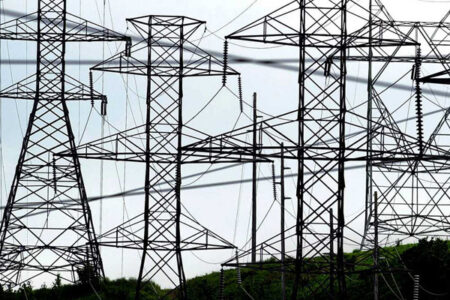Can the United States within the next decade reduce carbon emissions from the electric grid by 50%?
According to Bill Gates and the Breakthrough Energy Sciences (BES) organization founded by the Microsoft billionaire, the U.S. could achieve 70% carbon-free electricity and emissions reductions of 42% by the end of the decade. The cost, $1.5 trillion, $400 billion less than the current COVID rescue plan.

Achieving a renewable energy balance for the U.S. power grid will require investments in clean generation capacity and an enhanced transmission network to support it. Called the Macro Grid, the network will combine high-voltage direct current transmission (HVDC) with conventional AC transmission. Why a combination?
HVDC is more efficient for long-distance transmission. Renewable power generators like wind and solar produce direct current. Using HVDC combined with AC allows for the different regions of the U.S. to complement each other. Some areas like the Western states produce more renewable wind and solar while many Eastern states rely on thermal generated power using coal and natural gas. These power plants are more suited to AC transmission.
BES’s research has focused on four options to connect the country’s renewable resources to customers. It requires significant investments in new wind and solar capacity. Through these investments, the U.S. would be able to reduce annual grid emissions by 850 million tons.
The major challenge that wind and solar present is their variability as energy sources. How do you build an assured energy flow if the wind stops or the sun doesn’t shine? That means “we need to find ways to make the grid more robust to…these kinds of challenges,” states Dhileep Sivam, Vice President of BES.
Improved energy transmission across the U.S. would involve better integration of renewables and an increase in the grid’s resiliency. That’s why finding better ways to transfer electricity across the country is key to making renewable energy increasingly dominant.
In their proposals, BES notes that the energy captured from strong winds and sunny skies in different parts of the country needs to be available to consumers in places where those conditions at the time of generation do not exist. A windy day in Texas should be able to power up homes in California when there is no wind in that state. And a sunny day in California should be able to power a mid-western home in Texas on a day when local winds die down. If such were the case, the problems Texas faced during the recent polar vortex causing coal and natural gas thermal power plants to fail along with breakdowns in local wind turbines, would not have mattered because power would have been delivered to homes and businesses from across the grid originating elsewhere.
The BES proposals, which include upgrades to local AC transmission lines to link up short distances, and HVDC lines to connect resources crossing multiple states would lead to complete decarbonization of the U.S. grid by 2035, meeting the current administration’s targeted goals.
There are jurisdictional challenges to what BES is proposing. In the U.S., every state has sovereignty over energy generation and transmission. Utility companies tend to stay within political boundaries unless they are multi-state energy providers. Therefore local regulatory processes need to be overcome for the BES plan to succeed.
According to BES, if all states that have adopted 2030 clean energy goals were to meet them, the cost of upgrades would be $360 billion. The emissions reduction, however, would amount to a mere 6%, a far cry from the national target or the one proposed by BES above.
What’s missing from the BES plan. There is no discussion about energy storage and how adding battery capacity could impact the grid. Nor is there any mention of green hydrogen.
BES has made their model open source to allow anyone in the field to comment and contribute to the plan. Plans are afoot to look at Europe and other geographies.















